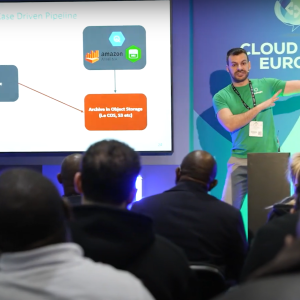
Advances in artificial intelligence (AI) and machine learning have been a major focus for organisations in every industry and every walk of life over the past few years.

The projected benefits to businesses and their workforces are expected to drive a surge of investment in the years ahead. Research from KPMG forecasts that enterprises will spend $232bn on intelligent automation technologies in 2025, rising from around $12.4bn today.
However, while much has been said about the benefit these investments will have in wider areas of the business, there’s been less focus on their impact on the crucial software development processes that power digital transformation.
In particular, these technologies have huge potential for revolutionising the mainframe environments that underpin digital service delivery, and alleviating the growing developer skills-shortage through augmented workforces.
Time to Break the Status Quo
The mainframe has sat at the heart of most major enterprises for more than 50 years, providing the huge processing power that’s required to run a business. However, despite its age, the mainframe remains just as critical today as it was half a century ago. In fact, it’s more essential to powering innovation than ever before. Recent research from Forrester found that 64 per cent of organisations plan to run over half of their critical business applications on the mainframe in 2019.
The same study also highlighted the extent of the growing skills-shortage in this area. It found that organisations are only replacing a third of their retiring mainframe workforce as the baby-boomer exodus continues, at a rate that Pew Research puts at 10,000 workers every day.
As this shortage of skilled mainframe developers continues to bite, today’s increasingly software-driven businesses must find new ways to harness the immense power and capabilities within these systems to accelerate innovation.
The long list of failed mainframe migration projects on Planet Mainframe shows that efforts to solve the problem by moving away from the platform are incredibly ineffective. A far better approach is to modernise on platform and continue to enjoy the huge benefits of reliability, performance, stability and security that the mainframe provides.
Three-Stages in a New Mainframe Revolution
It’s here where intelligent automation technologies will come to the forefront. AI, automation and machine learning are heralding a new era in mainframe productivity, by augmenting a new generation of developers with modern capabilities that force-multiply their efforts. This revolution will impact mainframe development teams and processes in three key ways:
The rise of augmented development – one of the key arguments raised in favour of migrating away from the mainframe towards less reliable and performant platforms is that the growing skills-shortage will leave businesses without the manpower needed to maintain it.
However, this is looking at the problem in the wrong way and threatens to throw away one of the most valuable IT assets underpinning the business. Finding developers with the specialist skillsets needed to work with outdated interfaces and software isn’t the answer either.
Instead, organisations should be forming cross-platform development teams that can work within common, agile development environments that provide augmented visibility into mainframe data and applications. These modern development environments provide access to more intelligent tools that can visualise complex mainframe applications in intuitive user interfaces, empowering any developer to understand and work on the mainframe, regardless of experience.
The advent of augmented testing – digital innovation can often be slowed by manual processes that are critical to ensuring positive business outcomes, yet time-consuming to conduct. For example, critical mainframe applications must be thoroughly tested before any new code is launched into production, to ensure it will not have any unanticipated impact or adverse effect on end-users. Automation can ease this burden, by enabling organisations to quickly create and execute tests.
Augmented developer tools can identify commonalities that allow them to automatically create repeatable test environments to check code quality as it is being worked on. These capabilities reduce the time code spends in testing, as well as supports the drive towards shift-left, where code quality is checked much earlier, so defects can be identified and rectified sooner in the process.
The dawn of augmented learning – machine learning is already being deployed to automate processes and unlock new business insights by spotting behavioural patterns that humans could never see.
Businesses can use these same capabilities to measure and track key KPIs across platforms. This can help them to find ways to improve the outcomes of digital transformation and understand the effectiveness of their development efforts based on metrics like MTTR and number of bugs trapped in development and test versus production. This unique level of visibility enables IT leaders to understand what developers are helping or hindering software delivery and augment processes to accelerate innovation anywhere.
For example, it could help to identify areas where further training can help inexperienced mainframe developers to use the functionality of their tools to full effect, to improve the velocity, quality and efficiency of core systems updates.
A Future Augmented with Intelligence
The use-cases for machine learning and AI capabilities will become increasingly diverse and far-reaching as we continue to develop an understanding of their potential. However, as organisations roll-out these technologies to augment critical processes and shift-left, it’s vital they don’t disregard any area of the business as a potential beneficiary. Given the continued importance of the mainframe, there’s no better, worthier candidate for an AI-driven revolution.






